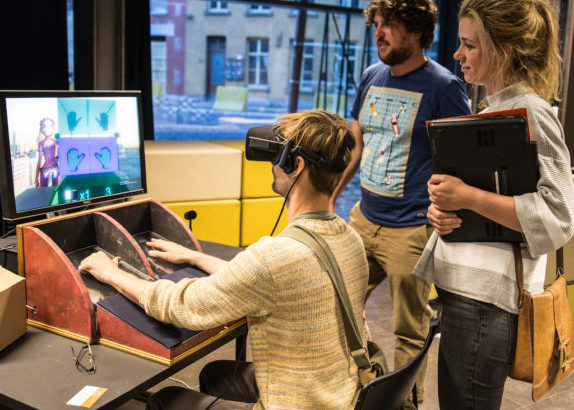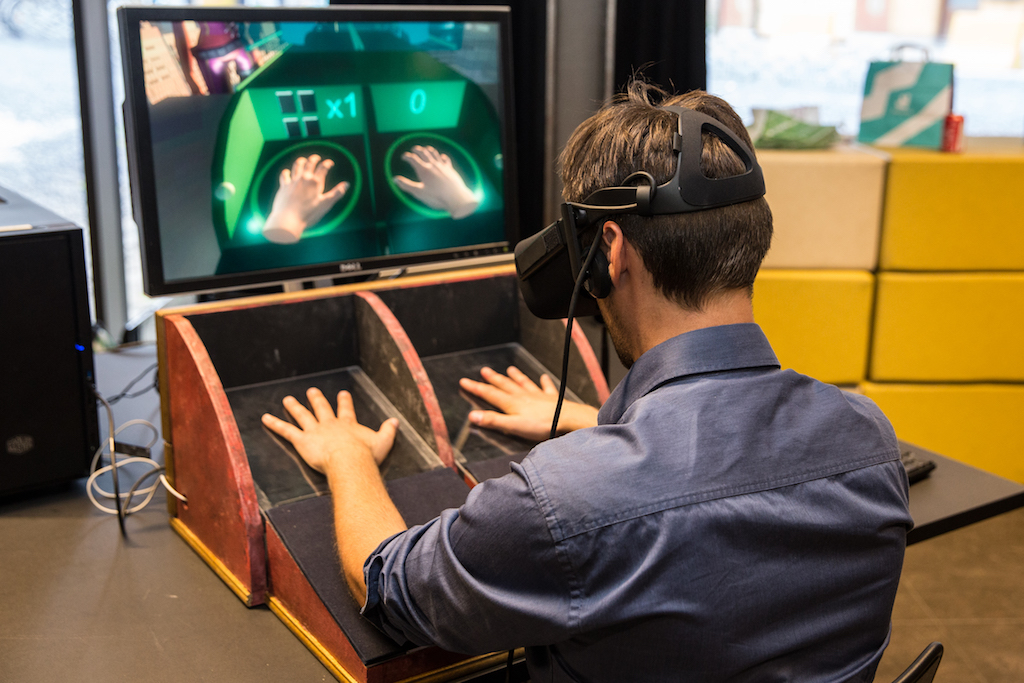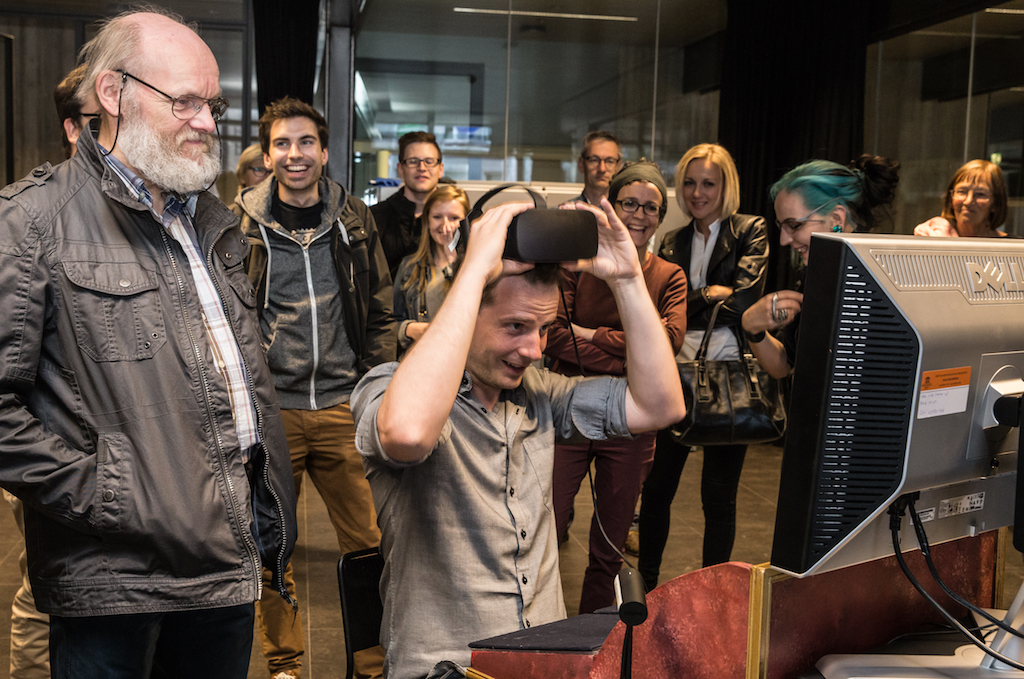Last month, we went to De Krook, Ghent’s brand new library building, and showcased one of the prototypes we developed for the wE-MOVE project. This imec.icon research project aimed to develop game concepts to improve fine and gross motor skills, for instance in rehabilitation. For this event, we focused on the Shapes and Rhythm prototype, targeted at children and adults with hemiplegia of the hands. It is a Virtual Reality implementation of mirror therapy.
With the prototype, we turned traditional mirror therapy into a more enjoyable version, as current mirror therapy exercices are soften perceived as very tedious, as they involve a large degree of repetition.

This is what current mirror therapy practice looks like: The impaired hand is hidden behind a mirror, and for the person doing the exercises, the hand in the mirror is seen instead of the impaired hand.
In Shapes and Rhythm, players see their hand in virtual reality and move them to the tune of the music to match shapes appearing underneath. Instead of showing the movement of the impaired hand, the movement of the other hand is mirrored. For the virtual reality experience we used the Oculus Rift, and to track the player’s hands, the Leap Motion tracker was used.
By turning mirror therapy into a game, the players are motivated to do their exercises, over and over again. This can be achieved by giving them a lot of songs to play through, with multiple difficulty levels, allowing them to master the different songs and reaching higher scores.
In addition to having people try the prototype, we also presented, detailing on the rapid prototyping process and the different iterations that lead to the version demoed that day. Apart from Kasper detailing on our Shapes and Rhythm prototype, other interesting projects were explained, such as a musical bicycle that supports biofeedback by the Institute for Systematic Musicology and a personal nanotechnology device that can detect health problems, by Antelope DX.
More pictures can be found on our Facebook gallery of the event. And if you’re interested in learning more about Shapes and Rhythm, definitely stay tuned for more blog posts!



